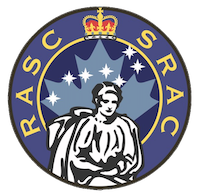Lewis A. Swift (February 29, 1820 – January 5, 1913) was an American astronomer.
He discovered or co-discovered a number of comets, including periodic comets 11P/Tempel-Swift-LINEAR, 64P/Swift-Gehrels, and 109P/Swift-Tuttle (parent body of the Perseids meteor shower). He also discovered comets C/1877 G2, C/1878 N1, C/1879 M1, C/1881 J1, C/1881 W1, C/1892 E1, D/1895 Q1 (a.k.a. D/Swift, whose debris stream Mariner 4 probably encountered on September 15, 1967), C/1896 G1 and C/1899 E1, and co-discovered C/1883 D1 (Brooks-Swift). Note, however, comet 54P/de Vico-Swift-NEAT was discovered by his son Edward D. Swift rather than by him.
He discovered his last comet at the age of 79. He was one of the few people to see Comet Halley at two of its appearances, 76 years apart.
In 1878 he believed he had observed two Vulcan-type planets (planets within the orbit of Mercury), but he was mistaken.
Apart from comets, he also discovered hundreds of nebulae. One of them is IC 289.
According to Swift, he first became interested in astronomy as young boy after observing the Great Comet of 1843 while on his way to school in Clarkson, New York. His teacher initially dismissed his observation, but three days later the 'discovery' of the comet was announced.
Swift conducted his early observations in Rochester, NY, 'lain out in the snow' in an alley on Ambrose Street or on the roof of Duffy's Cider Mill. Later he gained a patron in the Rochester patent medicine businessman Hulbert Harrington Warner, who financed the building of an observatory for Swift. A fund of $13,000 was raised to purchase a 16 inch telescope for Swift.
Warner went bankrupt in the Panic of 1893, which ended his financial support, and Swift then went to California to become director of Mount Lowe Observatory, taking the 16 inch telescope with him.
He was married twice, first to Lucretia Hunt in 1850 and then to Carrie D. Topping in 1864. Edward D. Swift was his son by the latter wife.
Swift was awarded the degree of Ph. D. from the University of Rochester.
Swift received more medals than any other astronomer of his time including three made of solid gold from Imperial Academy of Science in Australia, four made of bronze from the Astronomical Society of the Pacific, and the Laplace Medal from the French Astronomical Society. In 1897 he was the first person awarded the Jackson-Gwilt Medal of the Royal Astronomical Society.
The asteroid 5035 Swift is named in his honour, as is the lunar crater Swift.
At the meeting of 03-03-1903 the rules were suspended and on motion of G.E. Lumsden, seconded by A.F. Miller, Lewis Swift FRAS was elected a Corresponding Fellow of the Royal Astronomical Society of Canada. Swift thus had the honour of being the first Corresponding Fellow elected by the newly-dedicated Society.
At the meeting of 24-03-1908 Mr. Musson reported that Dr. Lewis Swift, famous for his discoveries of comets, had celebrated his 21st birthday on the 29th of February, having reached his 88th year. Mr. Musson stated that he had written to Dr. Swift offering him the congratulations of the Society. Some discussion took place regarding the necessity for having every fourth year a Leap Year, and the theories which had been propounded as methods of solving the difficulty.

